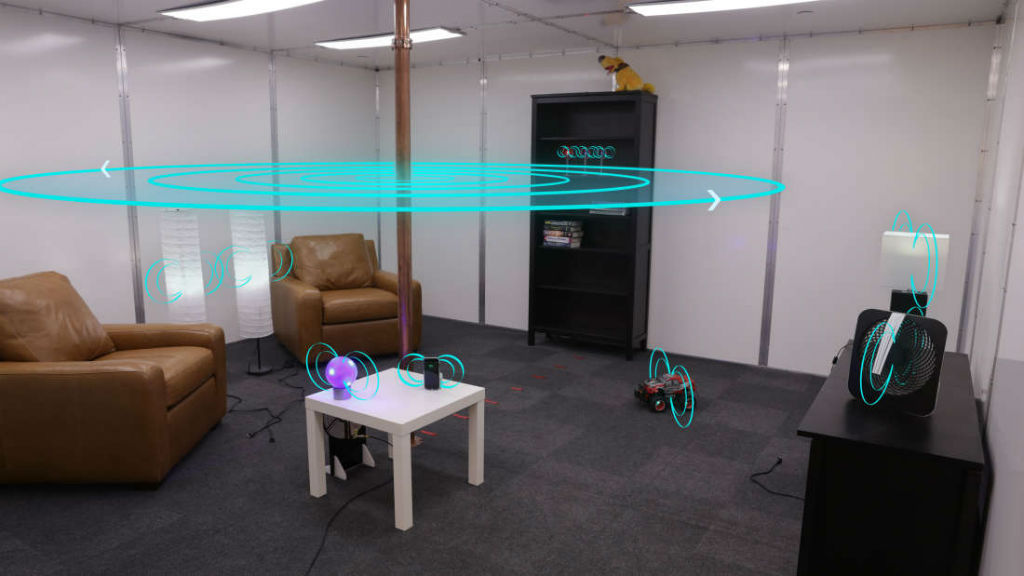At this point, charging cords feel almost too primitive for 2017 - researchers have been teasing wireless charging for years now, and yet, in every bedroom there's probably an unsightly mess of chargers hidden in the corner.
But scientists at Disney Research have come up with a solution - an entire room that can wirelessly charge 10 objects at a time, with no ports required. All you need to do is walk inside with your smartphone in your pocket, and it will start charging on its own.
"Wireless power delivery has the potential to seamlessly power our electrical devices as easily as data is transmitted through the air," the team explains.
"However, existing solutions are limited to near-contact distances. and do not provide the geometric freedom to enable automatic and unaided charging."
Tests in the prototype living room have confirmed that it can safely deliver around 1,900 watts of energy, with an efficiency level of 40 to 95 percent, depending on where the object is.
That's a decent amount of energy, and more than enough to charge your phone, lamps, fans, drones, and other small electronic devices.
Here's what the set-up actually looks like:
 Disney Research
Disney Research
The catch is that rather obtrusive copper pipe in the middle of the room has to stay, and the walls need to be built with specialised aluminium panels running from the floor to the ceiling, in order to facilitate a constant supply of power - although future iterations could replace these with conductive paint.
The way the system works is there are 15 capacitors installed in the middle of the pipe, and these are connected to a generator installed outside the room to produce a uniform magnetic field.
A receiving coil connected to the pipe resonates at the same frequency as the capacitors to power your devices.
You can watch a demonstration in the video below:

Other than the awkward copper pipe, there are some pretty major setbacks with the technology - dubbed quasistatic cavity resonance (QSCR) - in its current form.
The first is that while all that wireless charging is perfectly safe for humans to hang around in, according to the US federal guidelines for specific absorption rate (SAR), you can't get too close to the pole.
That means it will either need to have in-built sensors so it can tell when someone has gotten too close so it can shut itself down, or some kind of design that forces people to keep their distance.
And the room isn't just capable of charging a lot of devices at once - it needs to, as Sebastian Anthony explains for Ars Technica:
"[B]ecause a lot of power is stored within the metal enclosure, rather than dissipating into the environment, you can't just keep pumping in more power. In other words, you can safely beam 1,900 watts of wireless power into the room - but only if there are devices in the room that are receiving and using about 1,900 watts.
The researchers note that about 100 watts of power can be continuously pumped into the room safely - but for larger amounts, a smarter system, with some kind of real-time power consumption tracking, would be required."
But the good news is the system can theoretically be scaled up or down - think small cabinets that you can put your devices into to charge, or massive wirelessly charging warehouses.
"This technique can be applied to a wide variety of usage scenarios from small charging cabinets, to midsize rooms and offices, to large-scale warehouses potentially using multiple poles," the team describes.
Based on the current limitations, the room obviously isn't ready for the market just yet, but this is looking like a seriously cool way to solve our cords problem.
And imagine never having to leave the house with a half-charged phone because you forgot to plus it in for the thousandth time.
Here's one of the team discussing the technology:

The prototype has been described in PLOS One.
